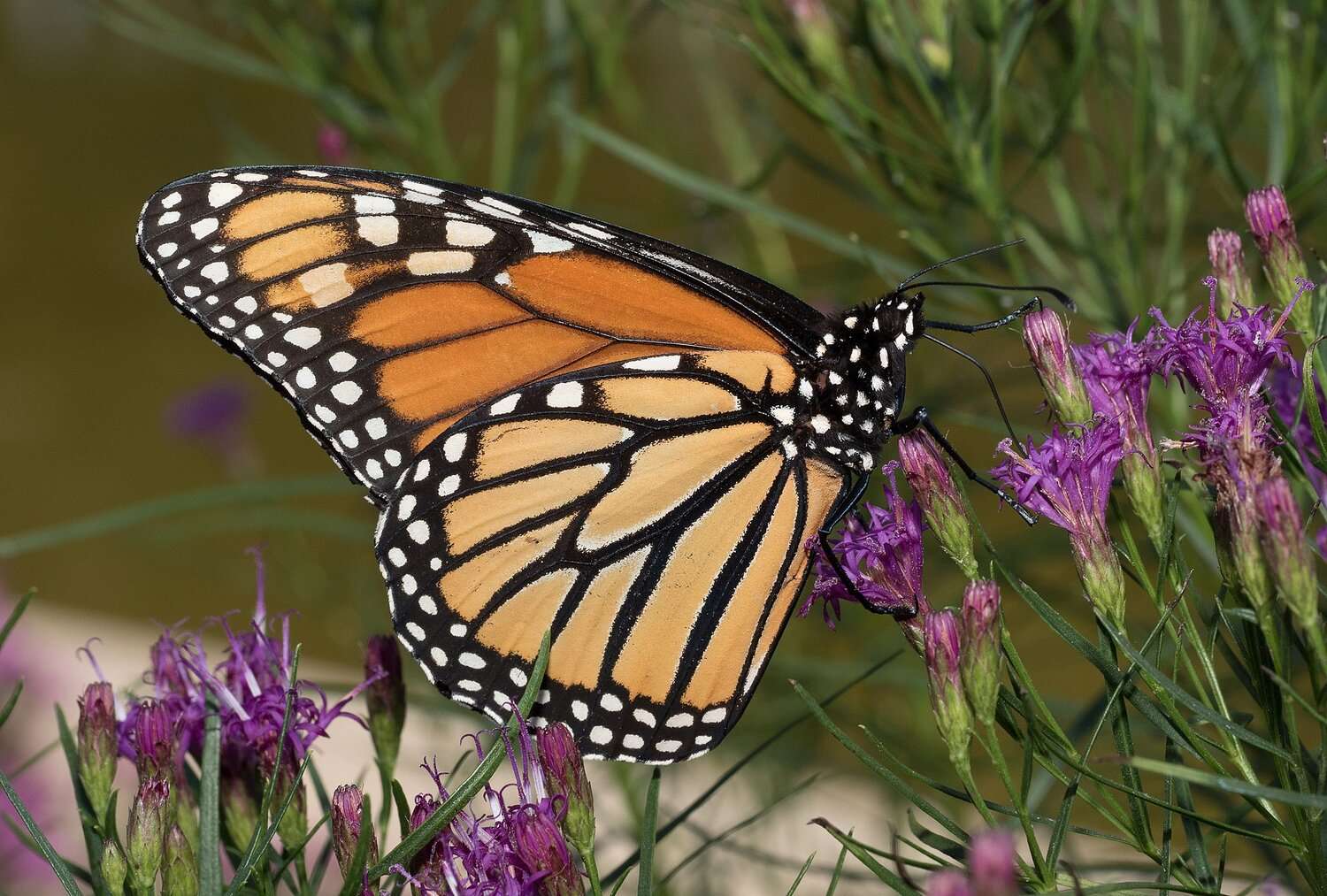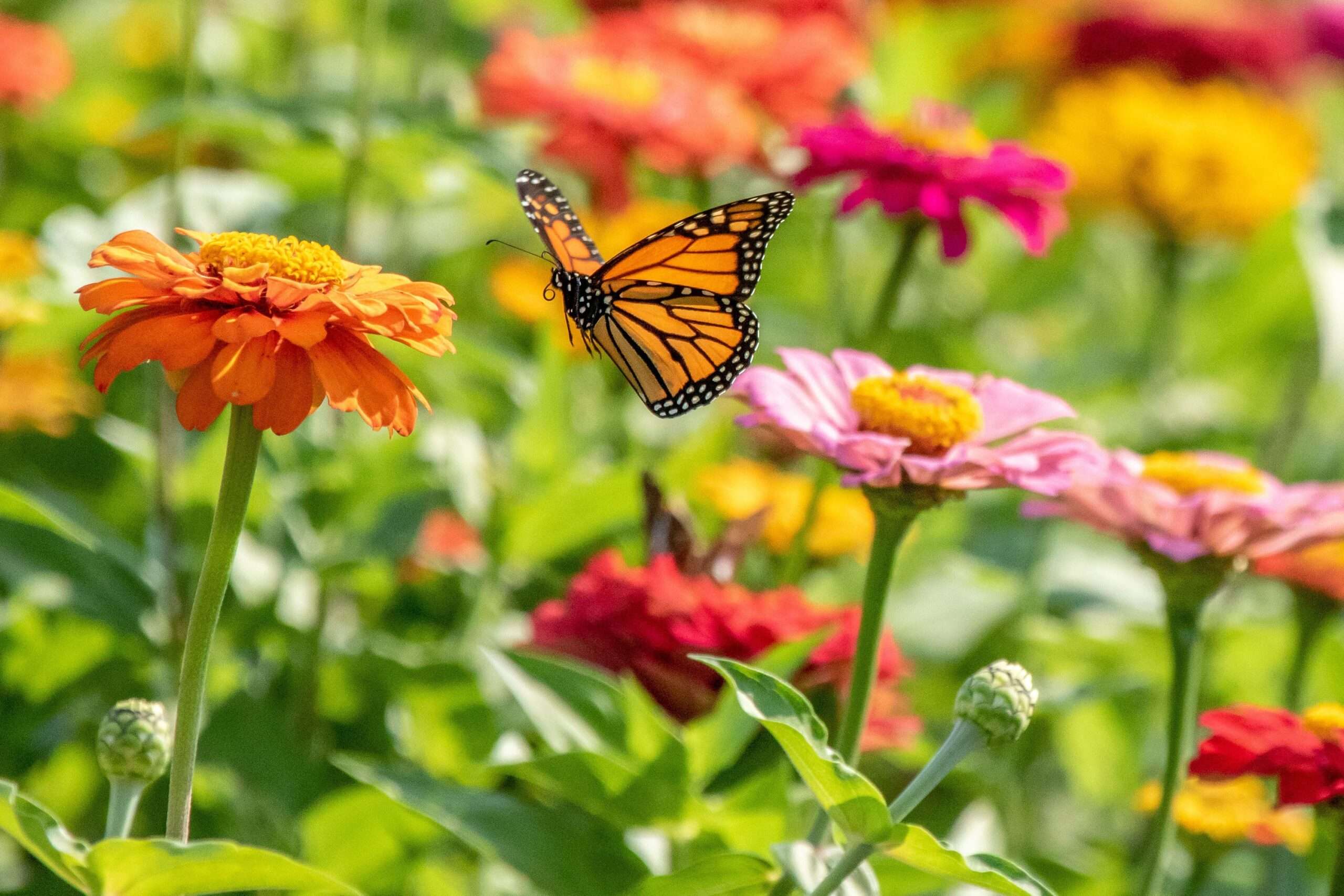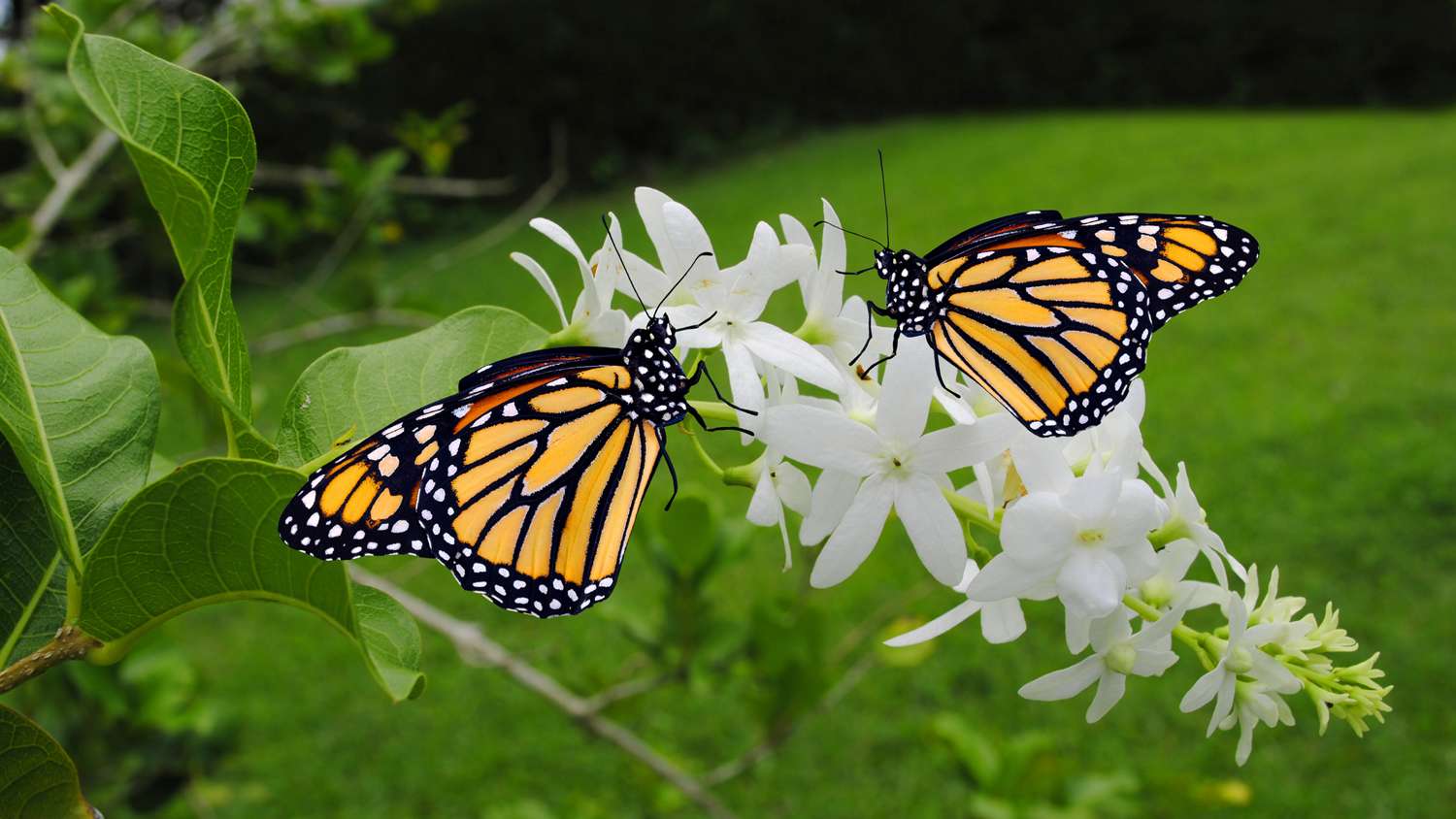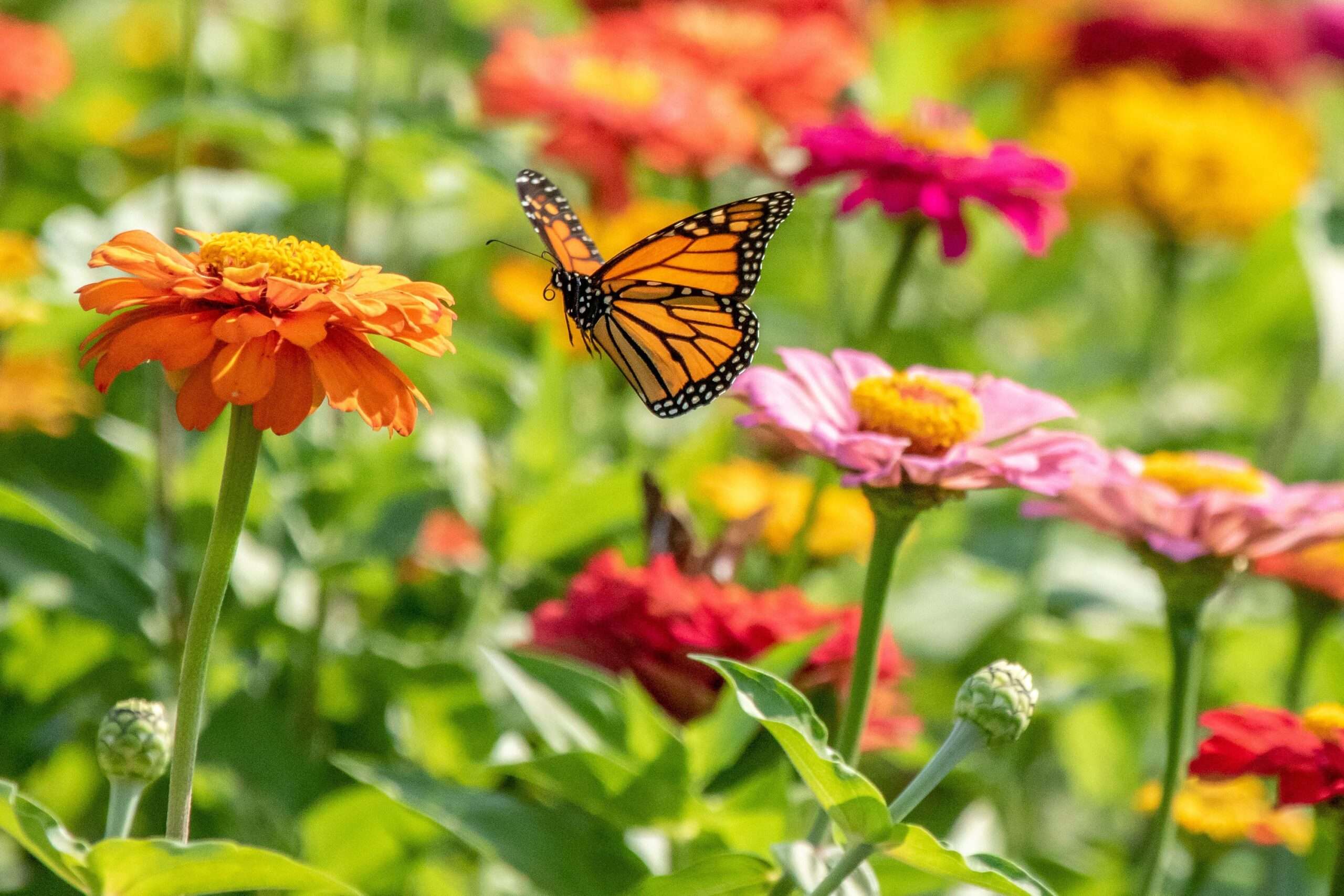If you’re looking for the perfect pollinators to add beauty and vibrancy to your garden, then look no further than the enchanting monarch butterflies. These magnificent creatures not only bring a touch of elegance to your outdoor space but also play a vital role in pollinating your plants. Unfortunately, monarch butterflies have been facing a decline in recent years due to habitat loss and the use of insecticides. However, by creating a butterfly-friendly garden and planting plants that attract monarchs like Milkweed, Zinnia Flowers, Miss Molly Bushes, and many others, you can provide a safe haven for these majestic insects. Milkweed, in particular, is essential as it serves as a host plant for their eggs and a vital food source for caterpillars. By incorporating these elements into your garden, you not only support the monarch butterfly population but also create a haven of natural beauty right outside your doorstep.
Importance of Monarch Butterflies as Pollinators
Monarch butterflies play a crucial role as pollinators in the ecosystem. Their unique ability to travel long distances and visit various flowers makes them highly effective at transferring pollen from one plant to another. This process of pollination is essential for the reproduction of many plant species. Without pollinators like monarch butterflies, the diversity and abundance of plant life would be significantly impacted.
Monarch butterflies as effective pollinators
Monarch butterflies are excellent pollinators due to their feeding behavior. As they fly from flower to flower in search of nectar, they inadvertently pick up pollen on their bodies. When they visit another flower, this pollen is transferred to the flower’s stigma, fertilizing the plant and enabling it to produce seeds or fruits. This simple act of pollination plays a vital role in the reproduction and survival of numerous plant species.
Benefits of attracting monarch butterflies to your garden
Having monarch butterflies in your garden not only adds beauty and charm but also brings numerous benefits. By attracting these majestic insects, you are creating a favorable environment for pollination to occur, thus promoting the growth and reproduction of your plants. Additionally, the presence of monarch butterflies adds an element of natural diversity to your garden, contributing to the overall health and balance of the ecosystem. Plus, who wouldn’t want to enjoy the mesmerizing sight of these graceful butterflies fluttering amidst the flowers in their own backyard? It’s a true delight!
Factors Affecting Monarch Butterfly Population
Unfortunately, the population of monarch butterflies has been declining in recent years due to various factors. Understanding these factors is essential in order to address the challenges and work towards conserving these beautiful creatures.
Habitat loss and its impact on monarch butterflies
One of the main factors contributing to the decline of monarch butterflies is habitat loss. Loss of natural habitats, including the destruction of milkweed plants, which are vital for the survival of monarchs, has had a negative impact on their population. Monarchs rely on milkweed plants for laying their eggs, and the caterpillars feed exclusively on milkweed leaves. Without sufficient milkweed plants, monarch butterflies struggle to complete their life cycle, leading to a decline in their numbers.
The role of insecticides in the decline of monarch butterflies
Insecticides, particularly those containing neonicotinoids, have also played a detrimental role in the decline of monarch butterflies. These chemicals are commonly used in agricultural practices to control pests, but they can have unintended consequences for beneficial insects like monarchs. Exposure to these insecticides can disrupt the butterflies’ behavior, reproductive abilities, and overall health, leading to a decline in their population. It is crucial to find alternative pest control methods that minimize harm to the monarch butterfly population.
Plants That Attract Monarch Butterflies
If you want to attract monarch butterflies to your garden, it’s important to provide them with the plants they need for food and reproduction. Some plants are particularly attractive to monarchs and can serve as host plants for their eggs or sources of nectar. By including these plants in your garden, you are creating a haven for monarch butterflies to thrive.
Milkweed: The essential plant for monarch butterflies
Milkweed is the cornerstone plant for monarch butterflies. It serves as a host plant for them to lay their eggs and provides a vital food source for the caterpillars. Without milkweed, the monarch butterfly population would struggle to survive. There are various species of milkweed that can be planted to attract monarch butterflies, each with its own unique characteristics and growing requirements.
Different species of milkweed to attract monarch butterflies
To attract monarch butterflies, consider planting different species of milkweed in your garden. Common milkweed (Asclepias syriaca) is a native species that produces large, showy clusters of pink flowers and serves as an important food source for adult monarchs. Swamp milkweed (Asclepias incarnata) is another popular choice, with its attractive pink flowers and adaptability to various soil types. Other milkweed species, such as butterfly weed (Asclepias tuberosa) and tropical milkweed (Asclepias curassavica), can also be included in your garden to provide a diverse range of options for monarch butterflies.
Other plants that attract monarch butterflies: Purple coneflower, Black-eyed Susan, Blazing star, Bee balm
In addition to milkweed, there are several other plants that monarch butterflies find attractive. Purple coneflower (Echinacea purpurea), Black-eyed Susan (Rudbeckia hirta), Blazing star (Liatris spicata), and Bee balm (Monarda spp.) are all highly favored by monarch butterflies. These plants provide nectar-rich flowers and serve as valuable food sources for adult butterflies. By including a variety of plants in your garden, you can create an inviting and diverse habitat for monarch butterflies to thrive.
Butterfly Bushes: Nectar-rich Flowers for Monarch Butterflies
Butterfly bushes, also known as Buddleia, are another wonderful addition to your garden to attract monarch butterflies. These flowering shrubs produce an abundance of nectar-rich flowers that are highly attractive to butterflies, including monarchs. Not only do butterfly bushes serve as an excellent food source for adult butterflies, but they also add beauty and fragrance to your garden.
Benefits of planting butterfly bushes
Planting butterfly bushes in your garden offers numerous benefits. Firstly, these shrubs provide a plentiful supply of nectar, attracting not only monarch butterflies but also a variety of other pollinators. The vibrant colors and sweet fragrance of butterfly bush flowers create an enchanting display that will bring joy and wonder to your outdoor space. Additionally, butterfly bushes are relatively easy to care for, making them a low-maintenance choice for any garden.
Selecting the right variety of butterfly bushes
When selecting butterfly bushes for your garden, it’s essential to choose the right variety. Opt for varieties that are known to attract monarch butterflies, such as the ‘Miss Molly’ butterfly bush (Buddleia ‘Miss Molly’). This particular variety produces vibrant red flowers that monarchs find highly enticing. Other popular monarch-friendly butterfly bush varieties include ‘Black Knight’ (Buddleia davidii ‘Black Knight’) and ‘Buzz’ series. By selecting the right varieties, you can maximize the chances of attracting monarch butterflies to your garden.
Caring for butterfly bushes in your garden
To ensure the health and vitality of your butterfly bushes, proper care is essential. These shrubs thrive in well-draining soil and require full sun to produce an abundance of flowers. Regular watering is necessary, particularly during dry spells, to keep the soil moist. Pruning is also important to promote a compact growth habit and maintain the shape of the bush. By providing the right conditions and care for your butterfly bushes, you are creating an attractive and welcoming environment for monarch butterflies.

Attracting Monarch Caterpillars
If you wish to witness the complete life cycle of monarch butterflies in your garden, it’s crucial to provide an environment that attracts and supports monarch caterpillars. By planting the right host plants and creating a caterpillar-friendly habitat, you can enjoy the remarkable transformation from caterpillar to butterfly up close.
Planting milkweed to obtain monarch caterpillars
To obtain monarch caterpillars in your garden, planting milkweed is an absolute must. Monarch butterflies exclusively lay their eggs on milkweed plants, as they are the only food source for the growing caterpillars. By including milkweed species, such as common milkweed or swamp milkweed, in your garden, you are providing a suitable environment for monarchs to reproduce and ensuring a steady supply of caterpillars.
Understanding the life cycle of monarch butterflies
To attract and support monarch caterpillars, it’s important to understand their life cycle. Monarch butterflies go through a complete metamorphosis, which includes four stages: egg, caterpillar, chrysalis, and adult butterfly. Female monarch butterflies seek out milkweed plants to lay their eggs. Once the eggs hatch, the caterpillars feed on the milkweed leaves and go through several molting stages as they grow. Eventually, the caterpillar attaches itself to a suitable surface and forms a chrysalis, within which it undergoes a remarkable transformation into an adult butterfly. By providing milkweed and the necessary conditions for each stage, you can create an environment that supports the entire life cycle of monarch butterflies.
Creating a caterpillar-friendly environment
Creating a caterpillar-friendly environment involves not only planting milkweed but also considering other factors that caterpillars need to thrive. Providing ample space and shelter helps protect caterpillars from predators and adverse weather conditions. Avoiding the use of pesticides is crucial, as they can harm or kill the caterpillars. Additionally, maintaining a clean and healthy garden environment by removing dead plants or debris can help prevent the spread of diseases that may affect caterpillars. By creating a safe and welcoming space, you can ensure that monarch caterpillars have the best chance of successfully completing their life cycle in your garden.
Design Tips for a Monarch Butterfly Garden
Designing a monarch butterfly garden requires careful consideration of various elements to create a suitable habitat for these magnificent creatures. By incorporating these design tips, you can maximize the attractiveness and functionality of your garden for monarch butterflies.
Choosing the right location for your garden
When selecting the location for your monarch butterfly garden, aim for a spot that receives ample sunlight throughout the day. Monarchs thrive in sunny environments, and having access to direct sunlight helps the plants grow and produce abundant flowers. It’s also important to choose an area that is protected from strong winds, as this can disrupt butterfly feeding and flight patterns. By choosing the right location, you can provide an optimal environment for monarch butterflies to visit and inhabit your garden.
Creating a diverse plant palette
A diverse plant palette is key to attracting and supporting monarch butterflies. Incorporate a variety of nectar-rich flowers that bloom at different times of the year to provide a continuous food source. In addition to milkweed, consider including other plants that monarch butterflies find attractive, such as purple coneflower, black-eyed Susan, blazing star, and bee balm. By creating a diverse plant palette, you are not only supporting monarch butterflies but also attracting a wide range of other pollinators to your garden.
Providing food and water sources
To meet the nutritional needs of monarch butterflies, your garden should provide a reliable food source in the form of nectar-producing flowers. Consider planting a mix of native and non-invasive plant species that offer a constant supply of nectar throughout the growing season. Providing shallow dishes or saucers filled with water can also be beneficial, as butterflies need access to water for drinking and puddling behavior. By ensuring a sufficient and accessible food and water supply, you are creating an inviting environment for monarch butterflies to flourish.
Incorporating shelter and resting spots
Monarch butterflies need sheltered spaces to rest and take refuge from extreme weather conditions. Incorporate structures such as trellises, tall grasses, or shrubs to provide resting spots and protection from strong winds. Including strategically placed rocks or flat stones in your garden can also serve as sunning spots for butterflies. By incorporating shelter and resting spots, you are creating a safe and comfortable environment for monarch butterflies to seek respite and recover.
Avoiding the use of pesticides
Pesticides, including insecticides and herbicides, can have detrimental effects on monarch butterflies and other beneficial insects. These chemicals can disrupt the butterflies’ behavior, reproductive abilities, and overall health, potentially leading to a decline in their population. To create a truly monarch-friendly garden, it is essential to avoid the use of pesticides. Instead, opt for natural pest control methods and embrace the concept of integrated pest management. By adopting pesticide-free practices, you are ensuring the well-being and safety of the monarch butterflies and promoting a healthy and sustainable garden ecosystem.

Tips for Maintaining a Monarch Butterfly Garden
Maintaining a monarch butterfly garden requires regular care and attention to ensure the health and vitality of the plants and the well-being of the butterflies. By following these tips, you can ensure that your garden remains a thriving and welcoming habitat for monarch butterflies.
Regularly monitoring and caring for plants
Regular monitoring is essential to identify any issues or diseases affecting your plants promptly. Check for signs of pest infestations, such as aphids or spider mites, and take appropriate measures to control them naturally. Remove any dead or diseased plant material to prevent the spread of diseases and ensure the overall health of your garden. Additionally, provide regular watering and fertilization as required to keep the plants strong and vibrant. By regularly caring for your plants, you are creating an environment that sustains both the plants and the monarch butterflies.
Managing pests and diseases without harming monarch butterflies
In managing pests and diseases, it’s important to prioritize the well-being of monarch butterflies. Choose natural pest control methods, such as introducing beneficial insects or using homemade insecticidal soaps, instead of chemical pesticides. Consider companion planting to deter pests or using physical barriers like netting to protect plants from damage. If you notice any signs of disease, promptly remove and dispose of affected plant material to prevent the spread. By adopting pest and disease management approaches that prioritize the health and safety of monarch butterflies, you can maintain a balanced and eco-friendly garden.
Seasonal maintenance for a thriving garden
Seasonal maintenance plays a vital role in keeping your monarch butterfly garden in optimal condition. In spring, assess the condition of your plants and remove any winter debris or dead foliage. Divide and transplant any overcrowded plants to ensure they have sufficient space to grow. In summer, continue to monitor for pests and diseases and provide regular watering as needed, particularly during dry spells. As fall approaches, cut back any spent flowers or foliage and prepare your garden for winter by adding a layer of mulch to protect the plants’ roots. By following a seasonal maintenance routine, you can keep your monarch butterfly garden thriving year after year.
Protecting Monarch Butterflies and Their Habitat
Conservation efforts play a vital role in protecting monarch butterflies and their habitat. By actively supporting these initiatives and implementing conservation practices in your own garden, you can contribute to the preservation and well-being of these iconic insects.
Supporting conservation efforts for monarch butterflies
Numerous organizations and initiatives are dedicated to conserving monarch butterflies and their habitats. Support these efforts by donating to conservation organizations, participating in citizen science projects, or volunteering your time and expertise. By actively engaging and supporting conservation efforts, you become part of a larger community working towards a common goal of preserving monarch butterflies for future generations.
Creating butterfly-friendly habitats
Beyond your own garden, you can help create butterfly-friendly habitats in your community. Encourage local authorities and organizations to support the planting of milkweed and other nectar-rich plants in public spaces. Participate in community gardening projects or start your own initiatives to raise awareness and promote the importance of monarch butterfly conservation. By expanding butterfly-friendly habitats beyond your garden, you are increasing the resources available to support the monarch butterfly population.
Educating others on the importance of monarch butterflies
Education is a powerful tool in raising awareness and inspiring action. Take the opportunity to educate others about the importance of monarch butterflies and the challenges they face. Share information about their life cycle, habitat requirements, and the role of pollinators in our ecosystems. Encourage your friends, family, and community to take action in their own gardens and support conservation efforts. By spreading the word and inspiring others to care for monarch butterflies, you can make a significant impact on their preservation.

Monarch Butterfly Migration
The annual monarch butterfly migration is an awe-inspiring natural phenomenon that spans across continents. Understanding and appreciating this remarkable journey can deepen our admiration for these beautiful creatures and motivate us to protect them.
Understanding the annual monarch butterfly migration
Every year, millions of monarch butterflies undertake an incredible migration journey from their breeding grounds in North America to their overwintering sites in Mexico or California. This migratory pattern can cover thousands of miles and involves multiple generations of butterflies. The migration is triggered by environmental factors, primarily changes in temperature and daylight hours, which prompt the monarchs to begin their long and arduous voyage. Understanding the complexity and significance of the monarch butterfly migration fosters a deeper appreciation for their resilience and adaptability.
The remarkable journey of monarch butterflies
The journey of monarch butterflies during migration is nothing short of extraordinary. The butterflies navigate using a combination of innate knowledge, the position of the sun, and environmental cues. They follow a general direction and rely on favorable wind conditions to aid their flight. Along the way, the butterflies rely on food sources and stop in various locations to rest and refuel. The migration serves as a critical survival strategy, enabling the butterflies to find suitable breeding and overwintering grounds. Witnessing this incredible journey firsthand or learning about it through various resources can leave a lasting impression and inspire us to take action in protecting their habitats.
Ways to contribute to their safe migration
Several actions can be taken to contribute to the safe migration of monarch butterflies. Planting milkweed and nectar-rich flowers in your garden provides essential resources for migrating butterflies during their journey. By creating a network of monarch-friendly habitats, you can offer resting spots and food sources along their migratory path. Additionally, supporting organizations and initiatives that focus on monarch conservation helps raise awareness, fund research, and provide critical resources for their protection. By playing an active role in supporting their migration, you are contributing to the overall health and well-being of monarch butterflies.
Conclusion
Monarch butterflies are not only mesmerizing creatures that bring joy and wonder to our lives but also essential pollinators that contribute to the health and diversity of our ecosystems. By understanding the factors affecting their population, planting the right host and nectar plants, creating a caterpillar-friendly environment, and implementing conservation practices, we can actively support monarch butterflies and safeguard their habitats. Through our collective efforts, we can ensure the survival and thriving population of these magnificent insects for generations to come. So, embrace the beauty of monarch butterflies, take action, and be a part of the conservation movement. Together, we can make a significant difference in preserving and supporting these invaluable pollinators.






